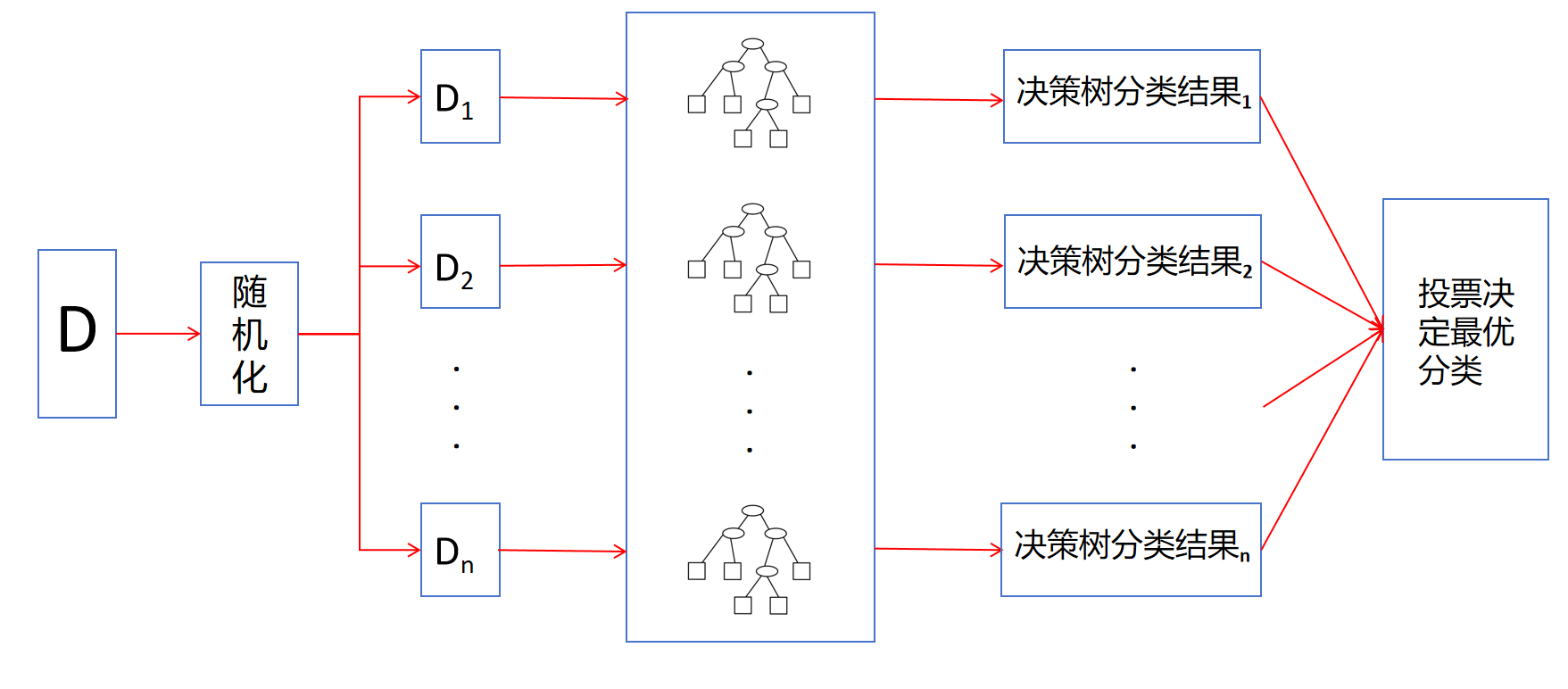机器学习模型在心血管疾病中的应用
DOI:
https://doi.org/10.52810/JIR.2024.003关键词:
人工智能, 深度学习, 机器学习, 心血管疾病摘要
随着当今社会带给人们的高强度工作生活压力,心血管疾病问题的日益严峻,发病率逐年增加,全球对此类疾病的关注与日俱增。传统的预测方法虽有一定预测能力,但是特异性较低,而机器学习和深度学习技术在为心血管疾病的高效预测和设计提供了新的解决方案。本文综述了机器学习和深度学习在心血管疾病预测中的应用,从心血管疾病问题现状引出对其预测的重要性,介绍了其遭遇的挑战,以及预测模型的优势性能评估。尽管面临诸多挑战,机器学习模型在预测心血管疾病研究中的应用仍具有巨大潜力,有望为降低心血管疾病发病率提供新的支持策略。
下载统计
参考文献
Sacco RL, Roth GA, Reddy KS, et al. The heart of 25 by 25:Achieving the goal of reducing global and regional premature deaths from cardiovascular diseases and stroke: A modeling study from the American Heart Association and World Heart Federation. Circulation, 2016, 133(23): e674-e690.
中国心血管健康与疾病报告编写组.《中国心血管健康与疾病报 告2019》概要[J]. 中国循环杂志,2020,35(9):833-854.
周航宇,姚兴伟.1990~2019年不良饮食危险因素对中国≥55岁人群心血管疾病负担的影响[J].中国循环杂志,2023,38(12):1279-1284.
WarrenS McCulloch and Walter Pitts.A logicalcalculus of the ideas immanentin nervous activity.The bulletin of mathematical biophysics,1943,5(4):115-133.
ROSENBLATT F. The perceptron: a probabilistic model for information storage and organization in the brain. Psychol Rev. 1958 Nov;65(6):386-408.
Hopfield J J.Neural Networks and Physical Systems with Emergent Collective Computational Abilities,Proc Natl Acad Sci.USA,1982,(79):2254-2558.
Geoffery E Hinton,Salakhutdinov RR.Reducing the dimensionality of data with neural networks.Science,2006,313(5786):504-7.
DEO R C.Machine learning in medicine[J].Circulation,2015, 132(20):1920-1930.
薛亦诚,刘超,杨贵淞,等.基于Logistic回归和支持向量机的早发性结直肠癌风险预测模型[J].中国现代普通外科进展,2024,27(03):195-198.
吴青,付彦琳.支持向量机特征选择方法综述[J].西安邮电大学学报,2020,25(05):16-21.DOI:10.13682/j.issn.2095-6533.2020.05.003.
SHI Z,CHEN G Z,MAO L,et al.Machine learning-based prediction of small intracranial aneurysm rupture status using CTA-derived hemodynamics:a multicenter study[J].AJNR Am J Neuroradiol,2021,42(4):648-654.
Joloudari JH, Azizi F, Nematollahi MA, Alizadehsani R, Hassannataj E, Mosavi AH (2021) GSVMA: a genetic support vector machine ANOVA method for CAD diagnosis. Front Cardiovasc,8.https://doi.org/10.3389/fcvm.2021.760178.
Aljarah I, Al-Zoubi AM, Faris H, Hassonah MA, Mirjalili SM, Saadeh H (2017) Simultaneous feature selection and support vector machine optimization using the grasshopper optimization algorithm. Cogn Comput 10:478–495.
ZHANG C, MA Y Q. Ensemble machine learning: methods and applications[M]. New York: Springer, 2012.
石智强.随机森林算法的改进及其在慢性病预警模型中的应用研究 [D]. 北京: 北京工业大学 , 2018.
Breiman, L. Random Forests. Machine Learning 45, 5–32 (2001).
Huang GB, Zhou H, Ding X, Zhang R. Extreme learning machine for regression and multiclass classification.IEEE Trans Syst Man Cybern B Cybern. 2012 Apr;42(2):513-29.
Rumelhart, D., Hinton, G. & Williams, R. Learning representations by back-propagating errors. Nature 323, 533–536 (1986).
郑楠. 非瓣膜性心房颤动患者左心房血栓或自发显影预测评分及模型的构建与验证[D].河北医科大学,2023.DOI:10.27111/d.cnki.ghyku.2023.000164.
郑楠,刘冰,闫洪伟,等.非瓣膜性心房颤动患者左心房血栓或自发显影的随机森林模型构建及抗凝结局[J].岭南心血管病杂志,2024,30(01):22-27+56.
Yang, L., Wu, H., Jin, X.et al.Study of cardiovascular disease prediction model based on random forest in eastern China.Sci Rep10, 5245 (2020).
石胜源,朱磊,叶琳,等.基于随机森林算法的心血管疾病预测研究[J].智能计算机与应用,2021,11(04):176-178+181.
Hosmer, D. W., Lemeshow, S., & Sturdivant, R. X. (2013). Applied logistic regression (3rd ed.). John Wiley & Sons.manufacturing technology. 2024, 130(3-4): 1405-1419.
McCullagh, P. (1989). Generalized Linear Models (2nd ed.). Routledge.
FENG X,YE G,CAO R,et al.Identification of predictors for hemorrhagic transformation in patients with acute ischemic stroke after endovascular therapy using the decision tree model[J].Clin Interv Aging,2020,15:1611-1624.
Nishadi, A.S.T. (n.d.). International journal of advanced research and publications predicting heart diseases in logistic regression of machine learning algorithms by python jupyterlab.Montu Saw.
saw(Ed.),2020 International Conference on Computer Communication and Informatics (ICCCI),IEEE,Coimbatore, India(2020), pp.1-6.
岳海涛,何婵婵,成羽攸,等.基于机器学习的冠心病风险预测模型构建与比较[J/OL].中国全科医学:1-11[2024-05-12].http://kns.cnki.net/kcms/detail/13.1222.R.20240418.1001.010.html.
罗幼喜,邓楠,胡超竹,等.函数型累积Logistic回归模型研究与应用[J].华中师范大学学报(自然科学版),2023,57(02):185-194.DOI:10.19603/j.cnki.1000-1190.2023.02.001.
HOSTETTLER I C,MUROI C,RICHTER J K,et al.Decision tree analysis in subarachnoid hemorrhage:prediction of outcome parameters during the course of aneurysmal subarachnoid hemorrhage using decision tree analysis[J].J Neurosurg,2018,129(6):1499-1510.
李彦冬,郝宗波,雷航.卷积神经网络研究综述[J].计算机应用,2016,36(09):2508-2515+2565.
周飞燕,金林鹏,董军.卷积神经网络研究综述[J].计算机学报,2017,40(06):1229-1251.
杨丽,吴雨茜,王俊丽,等.循环神经网络研究综述[J].计算机应用,2018,38(S2):1-6+26.
Zhang X, Fang F, Liu J. Weather-classification-MARS-based photovoltaic power forecasting for energy imbalance market[J]. IEEE Transactions on Industrial Electronics, 2019, 66(11): 8692-8702.
Liu J, Song D, Li Q, et al. Life cycle cost modelling and economic analysis of wind power: A state of art review[J]. Energy Conversion and Management, 2023, 277: 116628.
Liu Y, Fang F, Park J H. Decentralized dissipative filtering for delayed nonlinear interconnected systems based on T–S fuzzy model[J]. IEEE Transactions on Fuzzy Systems, 2018, 27(4): 790-801.
Lv Y, Fang F, Yang T, et al. An early fault detection method for induced draft fans based on MSET with informative memory matrix selection[J]. ISA transactions, 2020, 102: 325-334.
Jin S, Wang S, Fang F. Game theoretical analysis on capacity configuration for microgrid based on multi-agent system[J]. International Journal of Electrical Power & Energy Systems, 2021, 125: 106485.
Zhang J, Feng J, Zhou Y, et al. Linear active disturbance rejection control of waste heat recovery systems with organic Rankine cycles[J]. Energies, 2012, 5(12): 5111-5125.
Fang F, Zhu Z, Jin S, et al. Two-layer game theoretic microgrid capacity optimization considering uncertainty of renewable energy[J]. IEEE Systems Journal, 2020, 15(3): 4260-4271.
Lv Y, Lv X, Fang F, et al. Adaptive selective catalytic reduction model development using typical operating data in coal-fired power plants[J]. Energy, 2020, 192: 116589.
Fang F, Jizhen L, Wen T. Nonlinear internal model control for the boiler-turbine coordinate systems of power unit[J]. PROCEEDINGS-CHINESE SOCIETY OF ELECTRICAL ENGINEERING, 2004, 24(4): 195-199.
Wang N, Fang F, Feng M. Multi-objective optimal analysis of comfort and energy management for intelligent buildings[C]//The 26th Chinese control and decision conference (2014 CCDC). IEEE, 2014: 2783-2788.
Liu J, Wang Q, Song Z, et al. Bottlenecks and countermeasures of high-penetration renewable energy development in China[J]. Engineering, 2021, 7(11): 1611-1622.
Wei L, Fang F. ${H} _ {infty} $-LQR-Based Coordinated Control for Large Coal-Fired Boiler–Turbine Generation Units[J]. IEEE Transactions on Industrial Electronics, 2016, 64(6): 5212-5221.
Wang W, Liu J, Zeng D, et al. Modeling and flexible load control of combined heat and power units[J]. Applied Thermal Engineering, 2020, 166: 114624.
Liu J, Zeng D, Tian L, et al. Control strategy for operating flexibility of coal-fired power plants in alternate electrical power systems[J]. Proceedings of the CSEE, 2015, 35(21): 5385-5394.
Fang F, Xiong Y. Event-driven-based water level control for nuclear steam generators[J]. IEEE Transactions on Industrial electronics, 2014, 61(10): 5480-5489.
Fang F, Wu X. A win–win mode: The complementary and coexistence of 5G networks and edge computing[J]. IEEE Internet of Things Journal, 2020, 8(6): 3983-4003.
Fang F, Tan W, Liu J Z. Tuning of coordinated controllers for boiler-turbine units[J]. Acta Automatica Sinica, 2005, 31(2): 291-296.
Lian S, Han Y, Chen X, et al. Dadu-p: A scalable accelerator for robot motion planning in a dynamic environment[C]//Proceedings of the 55th Annual Design Automation Conference. 2018: 1-6.
Liu Q, Cheng L, Alves R, et al. Cluster-based flow control in hybrid software-defined wireless sensor networks[J]. Computer Networks, 2021, 187: 107788.
Chang K, Wang Y, Ren H, et al. Chipgpt: How far are we from natural language hardware design[J]. arXiv preprint arXiv:2305.14019, 2023.
Cheng L, Kotoulas S, Ward T E, et al. Robust and efficient large-large table outer joins on distributed infrastructures[C]//Euro-Par 2014 Parallel Processing: 20th International Conference, Porto, Portugal, August 25-29, 2014. Proceedings 20. Springer International Publishing, 2014: 258-269.
Wang Y, Han Y, Zhang L, et al. ProPRAM: Exploiting the transparent logic resources in non-volatile memory for near data computing[C]//Proceedings of the 52nd Annual Design Automation Conference. 2015: 1-6.
Han Y, Wang Y, Li H, et al. Data-aware DRAM refresh to squeeze the margin of retention time in hybrid memory cube[C]//2014 IEEE/ACM International Conference on Computer-Aided Design (ICCAD). IEEE, 2014: 295-300.
Liu C, Pei Y, Cheng L, et al. Sampling business process event logs using graph‐based ranking model[J]. Concurrency and Computation: Practice and Experience, 2021, 33(5): e5974.
Cheng L, Kalapgar A, Jain A, et al. Cost-aware real-time job scheduling for hybrid cloud using deep reinforcement learning[J]. Neural Computing and Applications, 2022, 34(21): 18579-18593.
Wang Y, Deng J, Fang Y, et al. Resilience-aware frequency tuning for neural-network-based approximate computing chips[J]. IEEE Transactions on Very Large Scale Integration (VLSI) Systems, 2017, 25(10): 2736-2748.
Li W, Wang Y, Li H, et al. P3M: a PIM-based neural network model protection scheme for deep learning accelerator[C]//Proceedings of the 24th Asia and South Pacific Design Automation Conference. 2019: 633-638.
Xu D, Zhu Z, Liu C, et al. Reliability evaluation and analysis of FPGA-based neural network acceleration system[J]. IEEE Transactions on Very Large Scale Integration (VLSI) Systems, 2021, 29(3): 472-484.
Liang S, Liu C, Wang Y, et al. Deepburning-gl: an automated framework for generating graph neural network accelerators[C]//Proceedings of the 39th International Conference on Computer-Aided Design. 2020: 1-9.
Guo J, Cheng L, Wang S. CoTV: Cooperative control for traffic light signals and connected autonomous vehicles using deep reinforcement learning[J]. IEEE Transactions on Intelligent Transportation Systems, 2023.
Mao Y, Sharma V, Zheng W, et al. Elastic resource management for deep learning applications in a container cluster[J]. IEEE Transactions on Cloud Computing, 2022.
Mao Y, Fu Y, Zheng W, et al. Speculative container scheduling for deep learning applications in a kubernetes cluster[J]. IEEE Systems Journal, 2021, 16(3): 3770-3781.
Zheng W, Song Y, Guo Z, et al. Target-based resource allocation for deep learning applications in a multi-tenancy system[C]//2019 IEEE High Performance Extreme Computing Conference (HPEC). IEEE, 2019: 1-7.
Liu Q, Cheng L, Ozcelebi T, et al. Deep reinforcement learning for IoT network dynamic clustering in edge computing[C]//2019 19th IEEE/ACM international symposium on cluster, Cloud and Grid Computing (CCGRID). IEEE, 2019: 600-603.
Li J, Chen Z, Cheng L, et al. Energy data generation with wasserstein deep convolutional generative adversarial networks[J]. Energy, 2022, 257: 124694.
Liu C, Chu C, Xu D, et al. HyCA: A hybrid computing architecture for fault-tolerant deep learning[J]. IEEE Transactions on Computer-Aided Design of Integrated Circuits and Systems, 2021, 41(10): 3400-3413.
Xu D, Chu C, Wang Q, et al. A hybrid computing architecture for fault-tolerant deep learning accelerators[C]//2020 IEEE 38th International Conference on Computer Design (ICCD). IEEE, 2020: 478-485.







